
17 minute read
Leaders of Our Past
from New/Gen-PA Zine-03
by newgenpenn
Vaccines
and Impacts on Women
Advertisement
VACCINES
By Noor Usmani
When 2020 came at midnight of New Years Eve, no one expected the reality of how the year actually turned out to be; instead of fulfilling new year resolutions of traveling to different countries, having fun trips, resuming everyday activities for the rest of the year, COVID-19 brought a halt to all these goals. What started as an epidemic in one country spread like wildfire to other countries in different continents, and the declared pandemic brought loss and alarm across the world. For many months, people stayed at home, learning and working virtually, waiting for COVID-19 cases to drop, and for a vaccine to be their savior. Luckily, developments for a vaccine started soon, and in less than a year, 2 tested, effective vaccines were announced safe to use by the FDA. The vaccines by Pfizer-BioNTech and Moderna COVID-19 are the ones being distributed and used currently. There are reported side effects of fever, headache, fatigue, muscle ache and soreness. The Pfizer-BioNTech COVID-19 vaccine is given in 2 doses, each three weeks apart. In the US, more than 22 million Americans have received the vaccine alone, 70% reporting pain, 33% fatigue, 30% headaches, and the rest reporting chills, fever, swelling and muscle aches.
In the US, the original goal made by the Biden administration was to vaccinate 1 million Americans per day. The target has been raised to 1.7 million shots per day and is hoped to increase to 3 million per day by April. If this pace is successful, then half of the adults in the US would get their first vaccine by April and all adults who wanted a shot should be vaccinated by June. However, Fauci predicts that most Americans will have access to a vaccine by mid to late May and June. As delivery of vaccine doses accelerates rapidly, day by day, another appropriate goal is to deliver the vaccines at roughly the same rate that the drug makers deliver them. With such a huge and anticipating population, it is a reasonable decision on Biden’s part to set modest public goals for the vaccines. However, creating and manufacturing vaccines is a complex and fragile work, and falling short of the public goal would create doubt from the nation. The new variant of the contagious COVID-19 virus also adds another reason for action and emergency. On the bright side of the curtain, COVID-19 cases have been dropping since the arrival of the vaccine, and the Democrats in the USA want to pass a $1.9 trillion coronavirus relief package; $1,400 would be given as direct payment to most Americans and the rest would be used for unemployment and local aid, vaccine programs and other provisions. The COVID-19 vaccine has been successful so far, such as in the instance of the Good Shepherd nursing home in the US, one of the first faculties in the country to vaccinate its people and where newfound hope and liveliness was experienced after a year of loneliness.
The COVID-19 Vaccine is not overjoyous news only to the only elderly, but also to millions of women around the world, who have been more affected than men as frontline workers and at home. Women from ages 24-35 are 25% more susceptible to face extreme poverty due to gender inequalities and during the pandemic, women have been hit harder in job loss as compared to men, leading to a growing financial and mental crisis. Women also make up the larger percentage of workers in service-related jobs that have had to lay off people, leading to women filing the majority of unemployment claims. Along with the coronavirus pandemic came worsening gender inequalities; a rise to the inaccurate gender stereotype about men being more decisive and headstrong leaders than women has caused numerous women to be pushed into extreme poverty. Female-run businesses and women’s paid labor have been affected most negatively from the economic downfall due to the virus. Plus, the industries most impacted by the coronavirus have more employed women than men, such as food, retail and entertainment, and women have to bear the grunt of the economic and social downfall resulting from COVID -19, along with decreasing income, unpaid care and increased domestic work burden. Along with long-term setbacks in the workforce and income that women have experienced due to the pandemic, a number of women’s services, such as reproductive health, are under high restrictions or are closed. There have been drug shortages for female reproductive care medicine as the provision of menstrual and female care has been deprioritized during the pandemic to focus on other resources for emergency response. This is partly due to the weak social protection systems that leave the vulnerable in society unprotected. For example, the lack of supportive services, such as child and senior care and meal houses, mixed with a large number of household demands has caused high pressure to fall upon the shoulders of numerous women. There has been a larger decline in women’s intuitive mood as compared to men, and the gender gap in mental health increased by 66%in 2020. Gender based violence also increased from 25% to 33%. No matter the age, gender or race, COVID-19 and the loss and change it brought affected everyone on Earth. The virus did not discriminate between who to infect and who to effect,
and it showed how one microbe brought people from all different parts of Earth as equals in terms of vulnerability. The surprise arrival of COVID-19 showed how important strong leadership and international teamwork was. COVID-19 opened the eyes of many people on Earth to the raw realities, from the apparent racism in the US to the relationship between the government and citizens. The pandemic also helped show the major role women play in the workforce and at home. The UN advocates for more available resources for women and wants to collect more data to analyze the impacts of the pandemic on women. They also aspire to put women more in the center of political changes as good leadership should include people of all genders, be competent and help build more resilient societies with facilities and relief for everyone. To further help provide relief and support for women, the governments and businesses could send direct income support to women workers and women-run businesses, as well as reconciliation for paid and unpaid work. As the Earth continues rotating on its axis, and the sun setting each night and blessing the day with a sunrise, humans will have to learn to push aside their differences and connect the threads that tie their similarities together if they want to survive. When a nation is connected, only then can the people fight through any obstacle together and make groundbreaking discoveries, and only then can we battle COVID-19 and the outcomes it brings effectively.
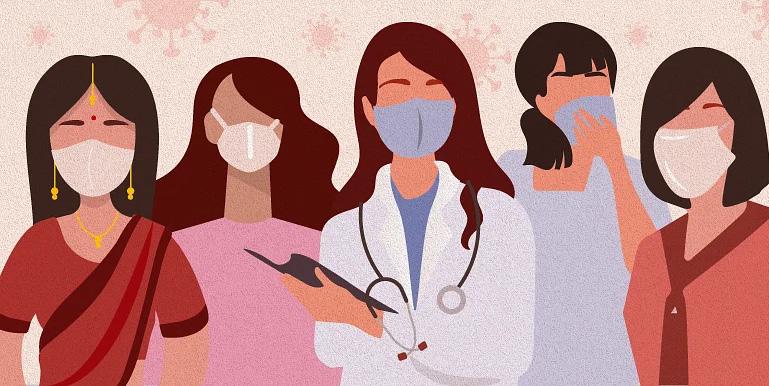
IMPACTS ON WOMEN
The COVID-19 Vaccine is not overjoyous news only to the only elderly, but also to millions of women around the world, who have been more affected than men as frontline workers and at home. Women from ages 24-35 are 25% more susceptible to face extreme poverty due to gender inequalities and during the pandemic, women have been hit harder in job loss as compared to men, leading to a growing financial and mental crisis. Women also make up the larger percentage of workers in service-related jobs that have had to lay off people, leading to women filing the majority of unemployment claims. Along with the coronavirus pandemic came worsening gender inequalities; a rise to the inaccurate gender stereotype about men being more decisive and head strong leaders than women has caused numer ous women to be pushed into extreme poverty. Female-run businesses and women’s paid labor have been affected most negatively from the economic downfall due to the virus. Plus, the industries most impacted by the coronavirus have more employed women than men, such as food, retail and entertainment, and women have to bear the grunt of the economic and social downfall resulting from COVID -19, along with decreasing income, unpaid care and increased domestic work burden. Along with long-term setbacks in the workforce and income that women have experienced due to the pandemic, a number of women’s services, such as reproductive health, are under high restrictions or are closed.
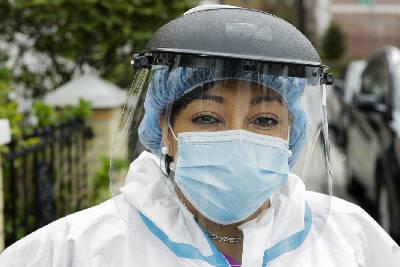
There have been drug shortages for female reproductive care medicine as the provision of menstrual and female care has been deprioritized during the pandemic to focus on other resources for emergency response. This is partly due to the weak social protection systems that leave the vulnerable in society unprotected. For example, the lack of supportive services, such as child and senior care and meal houses, mixed with a large number of household demands has caused high pressure to fall upon the shoulders of numerous women. There has been a larger decline in women’s intuitive mood as compared to men, and the gender gap in mental health increased by 66%in 2020. Gender based violence also increased from 25% to 33%. No matter the age, gender or race, COVID-19 and the loss and change it brought affected everyone on Earth. The virus did not discriminate between who to infect and who to effect, and it showed how one microbe brought people from all different parts of Earth as equals in terms of vulnerability.

The surprise arrival of COVID-19 showed how important strong leadership and international teamwork was. COVID-19 opened the eyes of many people on Earth to the raw realities, from the apparent racism in the US to the relationship between the government and citizens. The pandemic also helped show the major role women play in the workforce and at home. The UN advocates for more available resources for women and wants to collect more data to analyze the impacts of the pandemic on women. They also aspire to put women more in the center of political changes as good leadership should include people of all genders, be competent and help build more resilient societies with facilities and relief for everyone. To further help provide relief and support for women, the governments and businesses could send direct income support to women workers and women-run businesses, as well as reconciliation for paid and unpaid work.
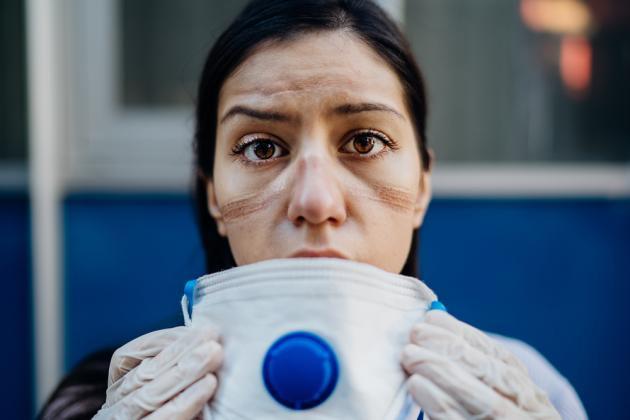
Source: https://eurogender.eige.europa.eu/events/women-focus-coronavirus-and-gender-equality-europe-conference
As the Earth continues rotating on its axis, and the sun setting each night and blessing the day with a sunrise, humans will have to learn to push aside their differences and connect the threads that tie their similarities together if they want to survive. When a nation is connected, only then can the people fight through any obstacle together and make groundbreaking discoveries, and only then can we battle COVID-19 and the outcomes it brings effectively.
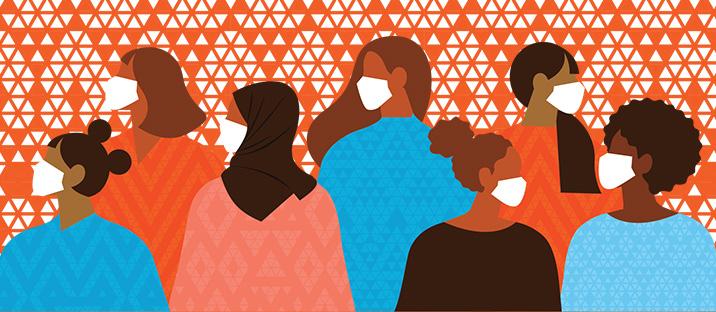
Source: https://www.wilpf.org/press-release-report-revealing-impacts-offailed-covid-19-responses-on-women-in-the-mena-region/
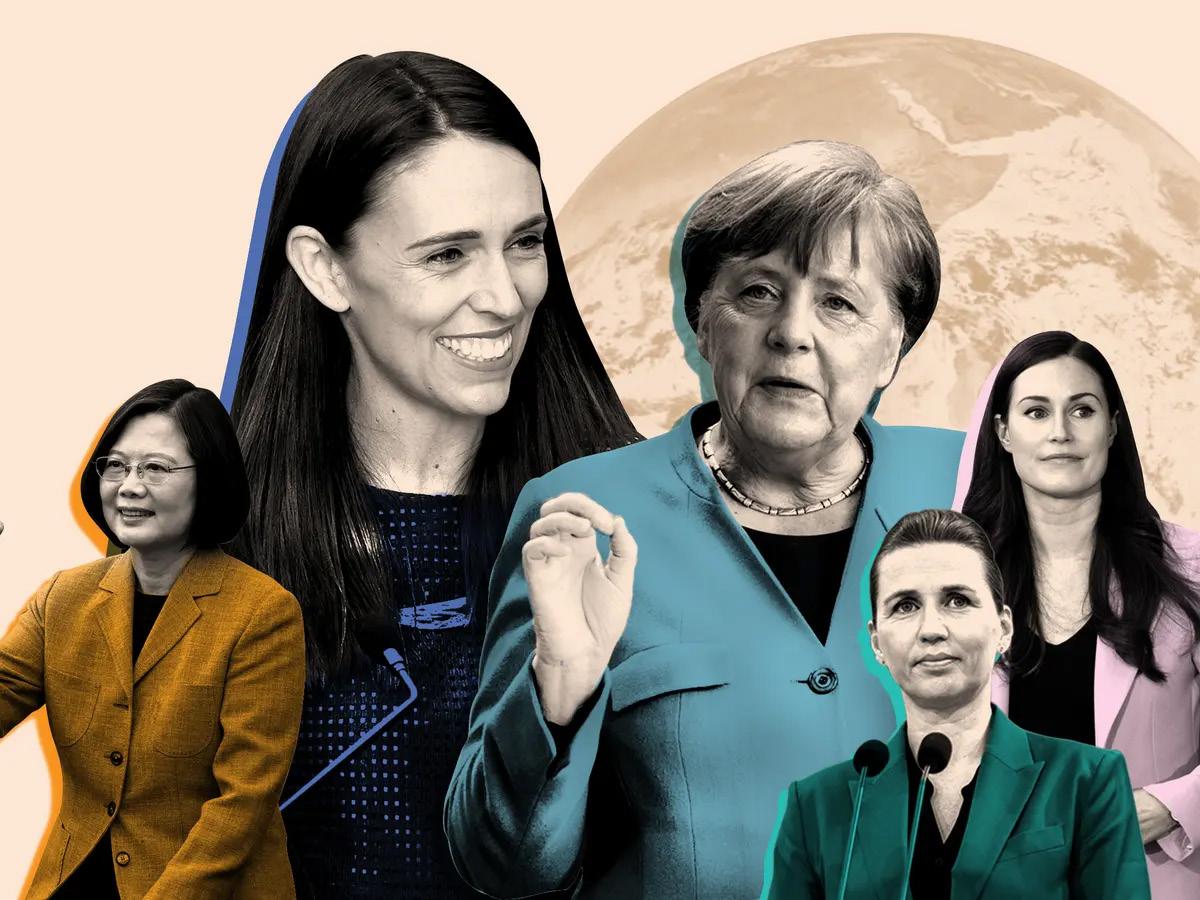
Source: https:// www.theguardian.com/ world/2020/ apr/25/ why-do-female-leadersseem-to-bemore-successful-at-managing-the-coronavirus-crisis
COVIDAn International Outlook on 19Noor Usmani
Contagious virus, worldwide lockdown, mutual panic… at first glance, these words seem perfect to describe the plot for a movie or a novel, such as the Maze Runner or Legend. However, in March of 2020, people quickly realized that the new infectious virus called COVID -19, spreading rapidly into other countries far from its origin in China, was no joke, especially as the cases rose to a dangerous number in Italy. In a flash, countries went into lockdown, restricting travel and closing facilities such as schools and malls, and what seemed like an extra 2 weeks of spring break for students stretched into a year of online learning. What is it? COVID-19 is caused by a new strain of coronavirus called SARS-CoV-2. Its main symptoms include fever, chills, coughing, loss in taste and smell and breathing difficulties. Older adults and people who have underlying medical issues such as diabetes and heart and lung disease seem to be at higher risk for more serious complications from the COVID-19 illness. COVID- 19 is highly contagious, and can spread through close contact from other people, mainly from respiratory droplets from sneezing, coughing, talking or touching infected surfaces. This is one reason why wearing masks while in places other than your house is highly recommended by the CDC, even mandatory in some places. Other universal precautions taken to help reduce the spread and infection of COVID are social distancing of 6-feet, frequent
sanitization of stores and hands, and COVID-19 testing.
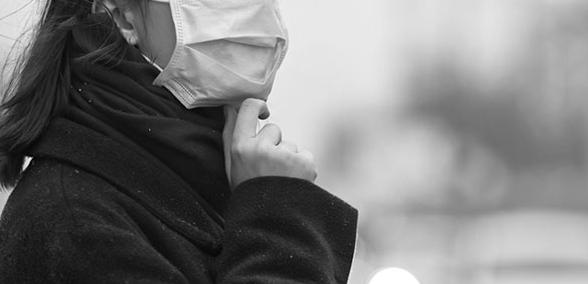
Worldwide Effects It took one microorganism to affect everyone on Earth in different but similar ways. Some people were forced to stay at home for long months, dealing with boredom. Online facilities such as Zoom and Google meets were used universally as many people went to school and work online. Others lost their job and fell into impoverishment as workplaces closed down; many people didn’t have enough money to buy food, which was already a limited necessity in grocery stores to buy, and some even went homeless as they couldn’t pay rent. The global economy took a downturn overall.
The Battle Against COVID The world held its breath and exhaled in relief when a COVID-19 vaccine was created. The two current vaccines to prevent COVID-19 are the Pfizer-BioNTech COVID-19 vaccine and Moderna COVID-19 vaccine. The Pfizer-BioNTech COVID-19 vaccine is given in 2 doses, each three weeks apart, and reported side effects include fever, headache, fatigue, muscle ache and soreness.
To this day and to this moment, the battle to fight COVID-19 continues. Scientists continue working on new technology to create more effective vaccines, leaders try to protect people and doctors work hard to save lives. Everyone has a significant role to fight for victory, and even a small action, such as abiding to CDC COVID-19 guidelines or volunteering for a charity, can bring a big change to help the planet we live in. Everyone on an international scale must do their duty as lawful citizens of Earth to protect themselves and others from COVID-19, and to quote Captain America, “This is the fight of our lives, and we’re gonna win. Whatever it takes.” 16
Current Events in the BLM Movement
Kate Emmanuel
In 2020, one of the most prominent movements was the Black Lives Matter movement. This movement was founded eight years ago in 2013 and was advertised on many social and political platforms. The uprising in 2020 became increasingly important because of the injustices done to the African-American people. This movement hopes to bring many changes into society, but there are seven most important changes they hope for.
Supporters of the movement are joining representatives in Congress like Representatives Ilhan Omar, Ayanna Pressley, Cori Bush, Jamaal Bowen, and many more are supporting the BLM movement and its fight for justice.
Secondly, there were Republican members of Congress who tried to overturn the election and encourage white supremacists to attack. The Black Lives Matter movement wants to make sure that these people are removed from Congress for their actions. People suspect that there are ties between white supremacists and officers in law enforcement. This movement wants a full investigation to be launched about these ties to secure the rights of all people in this country no matter their race or ethnic background and to make sure that no injustices are done towards them in the future.
The movement wishes to fight police brutality because some of the police were equipped with military-grade weapons like assault rifles. Some officers even posed in selfies with some of the rioters that day. Politicians have already passed a new bill called the Domestic Terrorism Prevention Act of 2021 in response to the coup on Capitol Hill. BLM believes that these kinds of laws are targeted towards black and brown communities to increase inspection in those areas. They wish to see these laws enforced fairly on all of the people in the United States and not directed towards one group of people.
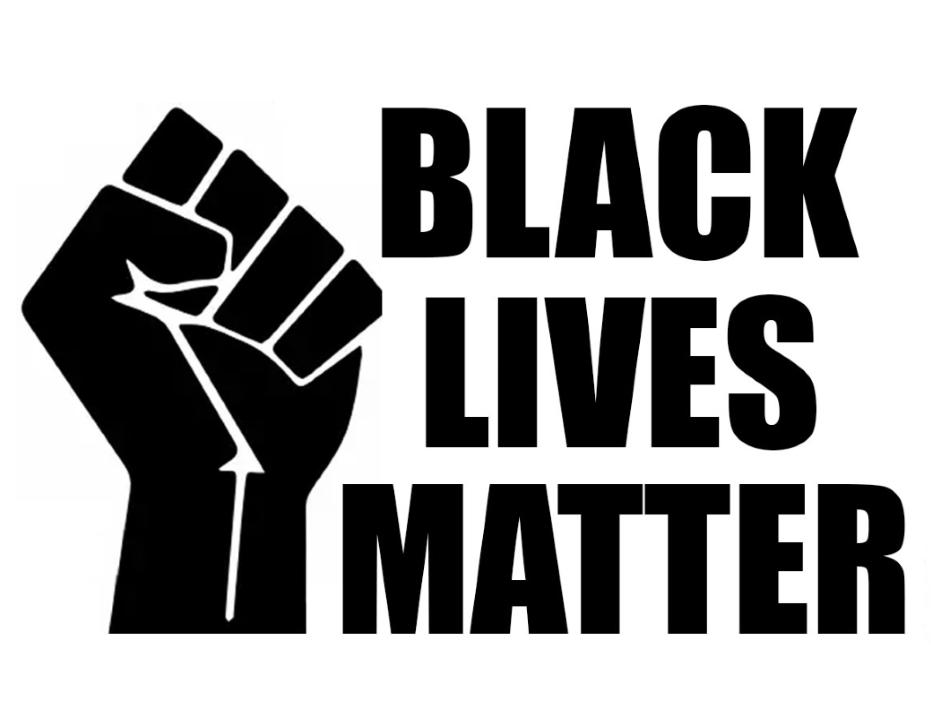
Finally, supporters of the Black Lives Matter movement demand to pass the BREATHE Act. This act was prepared by President Biden. It entails having racial equity screens in governmental programs to make sure members are not prejudiced against anyone. This ensures that African-Americans and people of color receive better care in terms of education, housing, and health.
Ultimately in 2020, Black Lives Matter has been a very powerful movement in raising awareness about the hardships African-American people face. Black Lives Matter partnered with the Broadway hit “Hamilton: The Musical” to reach over 5 million people through many social media platforms. Additionally, they partnered with Sprite to launch the “Create Your Future” campaign: a program encouraging young voters to vote in 2020. Through social media platforms, Black Lives Matter has impacted the actions and thoughts of numerous people in order to unify and support Black people.
The Civil rights movement started back in 1954. The movement is a decentralized political and social movement protesting incidents of police brutality and all racially motivated violence against African-American people. They stand for equality of the African-American community in our society. Some of their greatest female leaders are Daisy Bates, Coretta Scott King, and Dorothy Height. These women played crucial roles in the movement against the discrimination of African Americans in the United States, some of them were in the civil rights movement while others played roles in the BLM movement.
Daisy Bates was an icon during the Civil Rights Movement. SHe was born November 11th, 1914, in Little Rock, Arkansas. She obtained her education at Shorter Junior College and Shorter University. She was one of the most passionate activists of her time. She founded a newspaper called the “Arkansas State Press” with her husband L.C. Bates. The newspaper mainly focused on issues of racial equality and ending segregation, it became known for reporting candidly about acts of police brutality and other injustices done towards African-American people. Bates later wrote a memoir named “The Long Shadow of Little Rock’’ which reflected on her stories during the Civil Rights movement. Unfortunately, we lost this powerful woman on November 4th, 1999.
Coretta Scott King was an amazing woman who was an activist, an author, and a musician. She was born April 27th, 1927. Some of the causes that she fought for was the rights of the African-American community and LGBTQ rights. Coretta was married to Martin Luther King Jr. and is often referred to as the “First Lady of the Civil Rights Movement.” She got her bachelor’s degree in arts at the Antioch College. She also attended the New England Conservatory of Music. King was a very accomplished writer, musician, and activist, she wrote 8 books, and was also awarded the Gandhi Peace Prize. She passed away on January 30th, 2006.
Dorothy Height was born March 24th, 1912. She was an activist who focused on fighting for the rights of African American women. She fought for issues like unemployment, and illiteracy. She graduated from NYU in 1932, and earned her master’s degree in educational psychology in 1933, and did her postgrad at Columbia University and New York School of Social Work. Dorothy was both a Civil Rights activist and a women rights activist. She was very accomplished and won various awards during her lifetime such as the Candace Award for Distinguished Service, National Coalition of 100 African-American Women (1986), Presidential Citizens Medal (1989), Spingarn Medal from the NAACP (1993), Franklin Delano Roosevelt Freedom From Want Award (1993), and the Presidential Medal of Freedom (1994). She was also the President of the National Council of Negro Women for 40 years. She unfortunately died April 20th, 2010.
These women were critical in the progression of the Civil RIghts movement, and the women and African-American community would not be the same without their passion and the fight they put up against society. These women are certainly not the only women who fought against the things that society made us believe to be normal. We are so thankful to them and hope to continue their legacy.



